Project MM – The Gruesome Tale of the Frankenfilter. Large CleanPulse Filter on Aluminium Furnace.
When is a reverse air filter not a reverse air filter? When half of it is amputated and replaced with a ‘Cleanpulse’ reverse jet filter!
Over the past 10 years we have been contracted on a number of occasions to conduct consultancy and maintenance work at this Coventry based Aluminium re-cycling company.
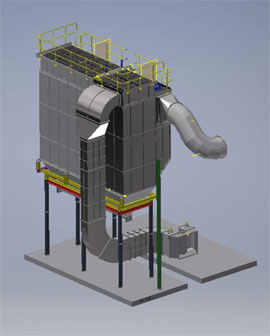
In October 2018 a new ‘Cleanpulse’ 840m² filter was ordered to replace one half of an existing DISA filter which had been badly damaged in a fire. The existing two filters serve the extraction ducting connected to several foundry furnaces. The filter started a German manufactured large reverse air unit which is split into 2 large banks of flat ‘envelope’ type bags mounted horizontally. This is fundamentally different to the FDL ‘Cleanpulse’ design of filter which has vertically hanging tubular bags which facilitates an ample space between each bag to allow dust to be pulled clear of the bag to fall to the hopper rather than directly on to the neighbouring bag. Our airflow distribution chamber is also optimised to not only remove the larger and heavier particles on entry to the filter but also aid the drop out of the dust once released from the bags.
Changing one half of a filter from reverse air to ‘Cleanpulse’ reverse jet was a highly unusual move, but for this client the pressures of maintaining their normal level of supply to major motor manufacturing partners meant the loss of production time was of paramount importance. This meant replacing the lost 50% of extraction capacity as quickly as possible was the number one priority and installing a better suited design of filter at the same time if at all possible merely a bonus. Fortunately FDL were able to meet both criteria and offer a quick turnaround and in the ‘Cleanpulse CPB 840, a better performing filter design too which we feel is a far preferable solution to the application than a reverse air type filter. In total from our initial site visit to measure up for the design to the completion of the installation of the filter took just 35 working days.
Our design of filter was adapted to utilise the existing filter support structure which was undamaged in the fire. However our design of intermediate support uses sindanyo pads to isolate the hopper from the support structure. This stops the support acts as a heat sink which helps eliminate cold spots where corrosive gases can form, attacking the steel walls of the hopper.
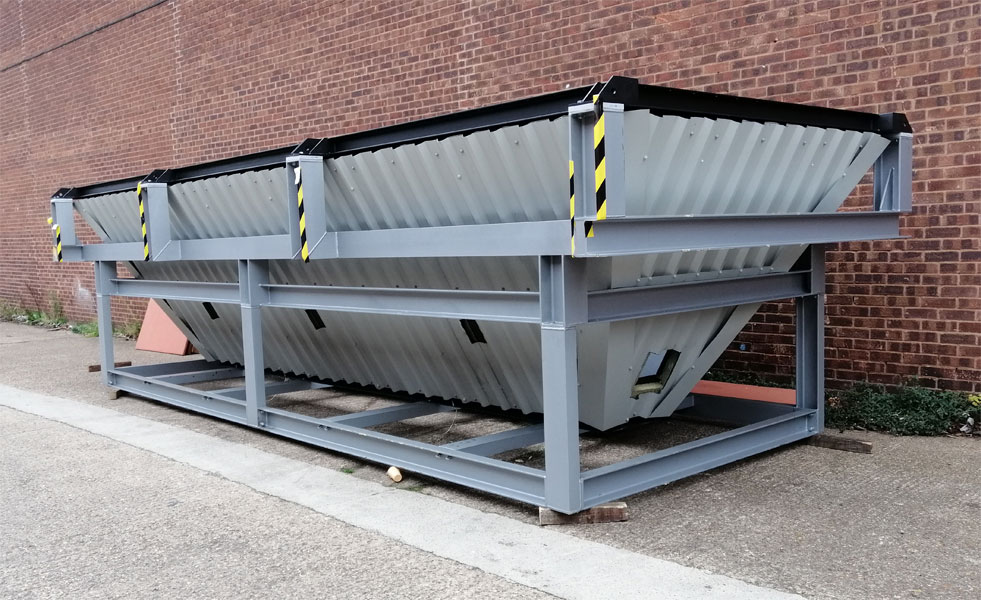
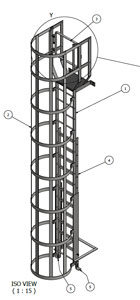
We also adapted the access to the top of the filter to integrate with the existing DISA access platforms. In order to ensure sufficient space was left to service both filters a ‘New York loft’ style ladder was made, the bottom portion of which is retractable to allow access
With the location of the filters on the site, space has always been at a premium so the design of the outlet ducting was kept as tight to the filter as possible before picking up with an existing damper flange immediately prior to the main fan. However, the damper would prove beneficial later during the installation/changeover stage of the project.
A new single valley hopper was designed with a trough screw conveyor and an outlet in the same location as the damaged filter in order to connect easily to the rotary valve above a cross screw conveyor which now takes dust from each half of the filter to a hanging bulk bag.
Installation
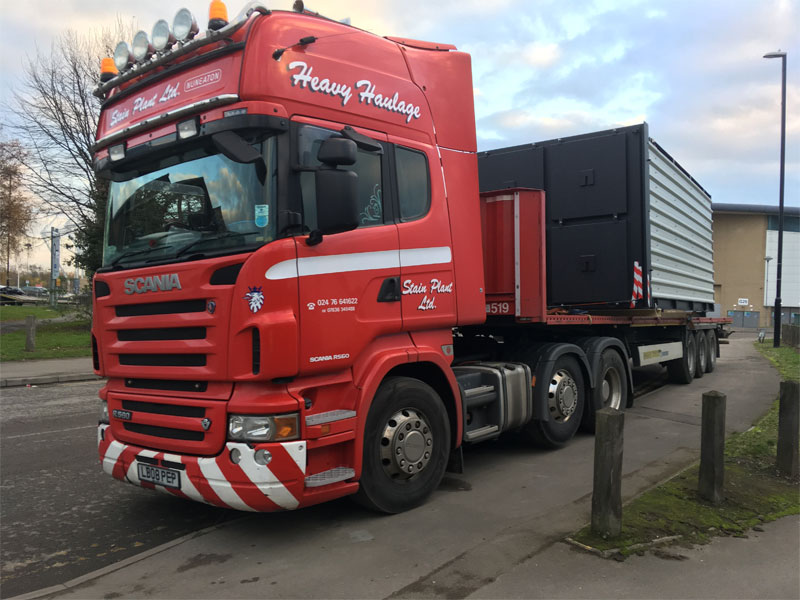
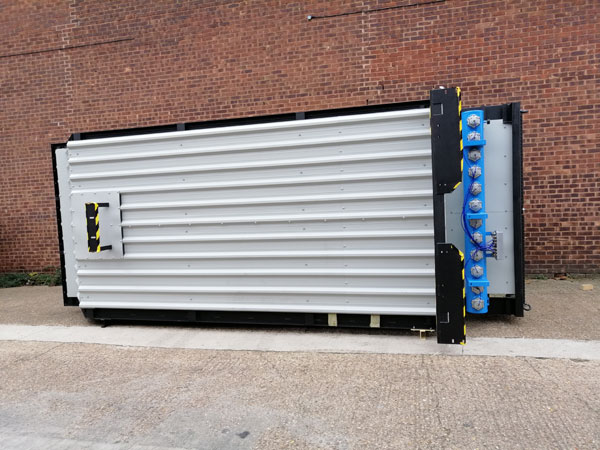
We knew early on in the process that the speed of the installation of this project would play a major part in the clients overall level of satisfaction with FDL. Planning in advance was crucial to ensure the impact on the production was kept to the absolute minimum possible. Unfortunately, the tight confines of the area where a total of 3 filter units, 3 fans and a 25m stack are all sited to the rear of the foundry building meant it was impossible to site any crane of a suitable size. Problem! A possible solution was proposed in being able to access a neighbouring yard to the rear of the client’s boundary fence. The shortest route lay to the rear of the DISA 2 filter but the land sloped steeply away and was covered in shrubbery, not to mention being owned by one of the UK’s most prestigious manufacturing companies.
Salvation lay some 25 metres to west of the filter, beyond DISA 3 filter at the rear of the property, fortunately our client has a good relationship with their vehicle dismantling neighbours and an agreement was made for them to allow us to place a 200T crane in the yard, scrap the old steelwork of the filter and large ducting sections as well as provide sufficient space to deliver the new pre-clad filter sections on 40’ long trailers. Preparations were made, a team of 6 erectors organised for a week on site and contract crane hire planned. With the cladding removed from the old filter, the extent of the damage to the filter body became evident; ensuring the crane lifts were conducted safely was of paramount importance.
By day 2 on site however we had removed all the inlet and outlet ducting, capping them both off in order to ensure factory production could continue with no more than a 10 min interruption to fume extraction, we also had the body of the filter removed and the original hopper cut out of the filter support which was being retained.
Day 3 entailed the installation of our pre-assembled valley hopper, attaching the screw conveyor prior to be lifted into position was essential also. In addition the first of the 3 filter sections was bolted into position and the remaining two sections delivered to site and off loaded. Day 4 saw the two remaining sections with the inlet and outlet duct transformers already attached and the access ladder all bolted in position. As planned, day 5 proved to be final day with the crane and saw both the inlet and outlet ducting completed and only the smaller tasks remaining for the second week of installation.
During week 2 on site, with the team of erectors reduced to just two for 2 days, we still managed to install all the safety hand railing on top of the filter, complete the differential pressure pipework to the pulse controller, install a rotating paddle level type switch in the filter hopper, connect between the new screw conveyor outlet flange and the existing rotary valve and install a pneumatically actuated butterfly valve which serves as a cold air bleed in the inlet ducting. The clients own subcontractors connected compressed air to the reverse jet tanks and also completed all the relevant electrical wiring referencing our basic electrical list supplied in advance. With all of these tasks completed commissioning the control panel modifications was the next step. Once commissioned installing the filter bags and cages was all that was left to do was install the 432 filter bags and cages, each measuring 4.75 Metres long. This task is critical to the performance of the filter so it was completed in house by FDL and with the assistance and co-operation of the client the filter was operational just 2 weeks after the start of the removal of the fire damaged filter with minimal disruption to the manufacturing process.
The client was happy with how the project was handled and how the filter is performing, so much so infact, we have recently quoted a system to replace DISA 1.
So in true Grimm’s tradition a gruesome tale has a very happy ending.
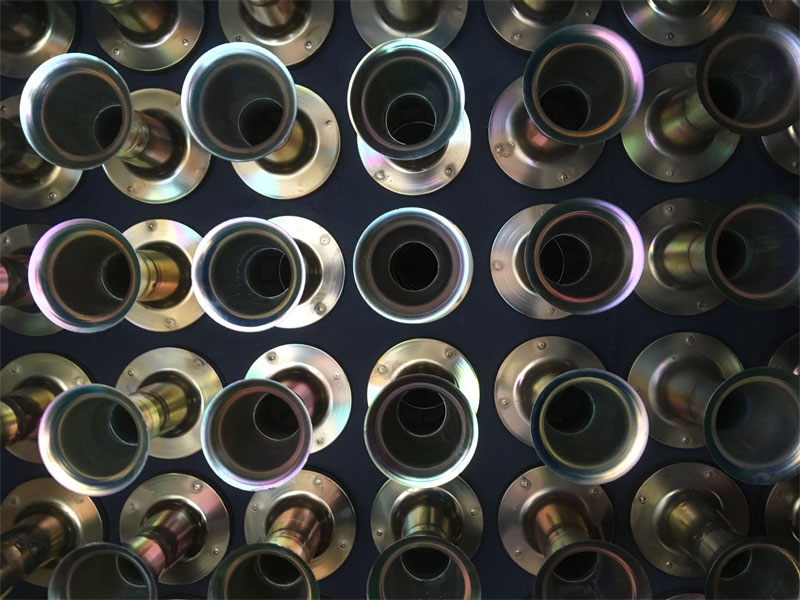
Project Manager: Stewart Callis
Our recent Projects
An empty warehouse is always a welcome place to start a project. This is because we have a blank canvas with which to design an ideal layout for a flue gas treatment plant. Once installed, our system cleans the gases from a waste boiler and waste infeed plant and will allow the end user to stop transporting waste around the country and manage it locally, save on transport costs and produce some electricity too.


